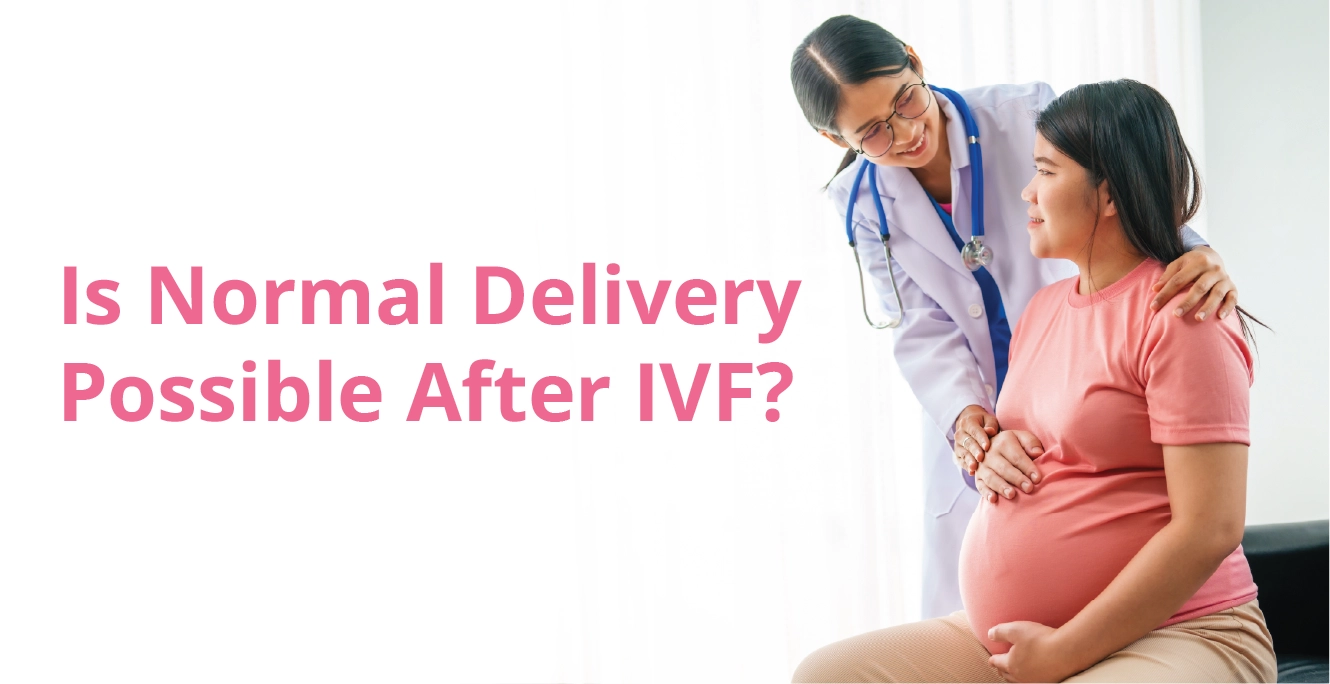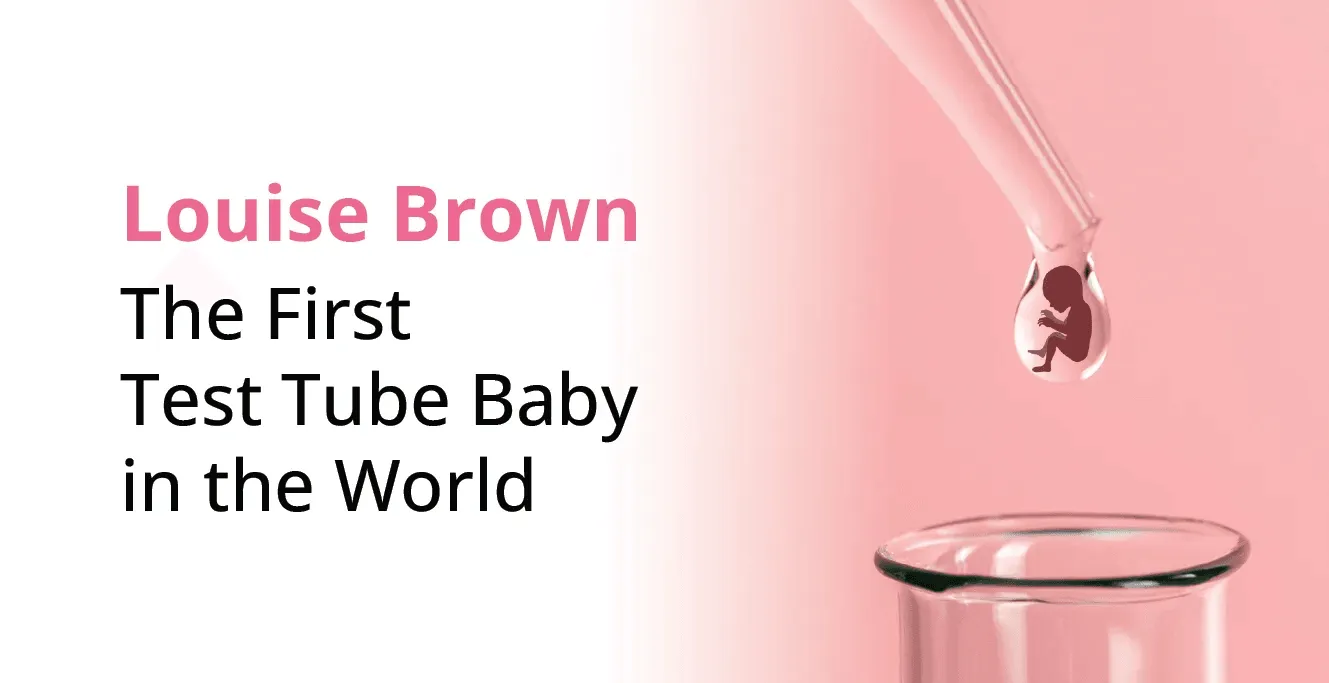
Test Tube Baby vs IVF: Are They Different?

Table of Contents
- What is a Test Tube Baby?
- World’s First Test Tube Baby: Who, When & How?
- Is IVF Different From Test Tube Baby?
- Who Requires IVF or Test Tube Baby Treatments?
- What Is the IVF (Test Tube Baby) Process?
- Test Tube Baby Cost
- Factors Influencing the Cost of Test Tube Baby Treatment
- Success Rates and Risks
- Myths vs Facts About Test Tube Babies (IVF)
- Success Stories: How is the Perception Changing?
- Is IVF an Answer to Your Fertility Questions?
- Conclusion
- FAQs
When you welcome a little one into your world, it becomes a life-changing experience for you. It gives you a fresh motive, reshapes your life journey, and changes your perspective every day.
Becoming parents feels like a blessing. It is a cherished dream for many couples, and advancements in medical science have opened up the possibilities for those facing infertility challenges. One such breakthrough is the ‘test-tube baby’. But what does a test-tube baby mean, what happens in this process, and is it the same as what we call IVF? Let’s uncover the facts.
What is a Test Tube Baby?
A test tube baby is a baby born through In-Vitro Fertilisation popularly known as IVF. IVF is a medical procedure in which a female egg is fertilised with a male sperm outside the body in a laboratory setting. The fertilized egg, i.e., the embryo, is then transferred to the mother’s uterus, where it implants and grows naturally.
Does it mean a baby is born in a test tube? Not really.
Despite the name test-tube baby, the procedure does not involve an actual ‘test tube’ but rather petri dishes or similar equipment used in laboratories. The term gained popularity due to its historical context and media coverage of early IVF successes. So to answer your question, the terms test-tube baby or IVF baby can be used interchangeably as they mean the same thing.
World’s First Test Tube Baby: Who, When & How?
-
The world’s first test tube baby, Louise Brown, was born on 25 July 1978 in the UK.
-
The credit for this breakthrough achievement goes to Dr. Robert Edwards and Dr. Patrick Steptoe, who revolutionized fertility treatments and brought this technique into the headlines.
-
Since then, millions of babies have been born across the world using test-tube techniques, giving countless couples the joy of parenthood.
From a Lab to a Family: The IVF Story

- 1969: The first successful fertilisation of a human egg outside the body.
- 1978: Louise Brown, the world’s first test tube baby, is born in the UK.
- 1980s-1990s: IVF became very popular, providing hope to innumerable families.
- 2000s: Introduction of advanced techniques like ICSI and embryo freezing.
- Present: IVF is making parenthood possible for many couples across the world. There is still much research being carried out to increase IVF success rates.
Is IVF Different From Test Tube Baby?

If you’re curious about IVF vs test tube baby, here’s the deal: Technically, there is no difference between in-vitro fertilisation (IVF) and the term test tube baby. The term test tube baby is commonly used to describe IVF, which became widely used in the 1970s and 1980s due to media coverage. The term gained popularity when IVF was first developed, as the fertilisation of the egg takes place outside the woman’s body, in a petri dish, rather than in the fallopian tubes.
In both procedures, the egg is fertilised outside the body. The fertilised embryo is then carefully monitored and, once ready, is implanted into the woman’s womb to grow. While the term test tube baby is still widely used, IVF is the correct and more widely accepted term in the medical field today.
Who Requires IVF or Test Tube Baby Treatments?
IVF or test tube baby treatments offer hope to couples who face challenges in conceiving naturally. There are several factors, both medical and lifestyle-related, that can impact fertility, making IVF an essential solution for many. The treatment can be particularly helpful for couples dealing with the following conditions and concerns:
-
Blocked Fallopian Tubes: If the fallopian tubes are damaged or blocked, fertilisation can’t occur naturally. IVF bypasses this issue by allowing fertilisation to happen outside the body.
-
Endometriosis: This condition, where tissue similar to the lining of the uterus grows outside it, can impact fertility. IVF can help by offering a controlled environment for fertilisation.
-
Uterine Fibroids: These non-cancerous growths in the uterus can interfere with fertility and pregnancy. IVF can bypass this challenge and help achieve a successful pregnancy.
-
Genetic Concerns: IVF allows genetic screening to ensure that only healthy embryos are implanted. This reduces the risk of passing on hereditary diseases.
-
PCOS (Polycystic Ovary Syndrome): PCOS is a hormonal imbalance that can interfere with ovulation, making it difficult for women to conceive. IVF can be an effective solution for women with PCOS, especially when other treatments like ovulation induction fail.
-
Low Sperm Count or Quality: If a man has a low sperm count or poor sperm quality, IVF with sperm retrieval techniques or a sperm donor can help.
-
Erectile Dysfunction or Low Sperm Production: For men facing difficulties with erections or sperm production, sperm donation can be an option to enable fertilisation.
-
Age-Related Fertility Decline: Fertility naturally declines with age, especially in women after 35. IVF can assist older women struggling to conceive by helping with egg retrieval and fertilisation outside the body. For men, sperm quality and quantity also decrease after 40, affecting motility and genetic health. IVF, combined with sperm retrieval and genetic screening, can help overcome these challenges.
The treatment is beneficial for couples having trouble conceiving and increases their chances of a successful pregnancy.
What Is the IVF (Test Tube Baby) Process?

The test tube baby process, also known as IVF, is intricate and carried out in carefully controlled medical environments. Here’s a step-by-step breakdown:
Ovulation Stimulation
To maximise the chances of fertilisation, the woman is given hormonal medications to stimulate her ovaries. The process encourages the production of multiple eggs.
Egg Retrieval
After they mature, the eggs are collected using a minor surgical procedure known as follicular aspiration, which is performed under ultrasound guidance.
Collection of Sperm
The male partner provides a sperm sample, which is then processed in the laboratory to isolate the healthiest and most active sperm.
Fertilisation
The collected eggs and sperm are combined in a controlled laboratory environment. Fertilisation occurs either naturally in a petri dish or through a method called Intracytoplasmic Sperm Injection (ICSI), where a single sperm is injected directly into the egg.
Embryo Culturing
The fertilised egg develops into an embryo, which is monitored over a few days to ensure optimal growth and viability.
Embryo Transfer
The healthiest embryo(s) are transferred into the woman’s uterus through a painless procedure. This step is crucial for implantation and the subsequent progression of pregnancy.
Confirmation of Pregnancy
A blood test is done usually after two weeks to confirm the pregnancy and whether the procedure was successful.
Test Tube Baby Cost
The cost of a test tube baby varies significantly based on factors such as:
- The clinic’s location and reputation.
- The complexity of the case.
- If there is a need for additional procedures like ICSI or genetic testing.
The test tube baby cost in India depends on many factors as mentioned. Many clinics offer financial counselling and payment plans to make the treatment more accessible. Birla Fertility and IVF offers you transparent pricing with no hidden costs and 0% EMI options to make parenthood possible for you. We believe in making IVF possible for every couple with best-in-class treatment and the care they need.
Factors Influencing the Cost of Test Tube Baby Treatment
The treatment cost of IVF (test tube baby) can vary based on:
- The number of cycles required for success.
- Whether donor eggs or sperm are needed.
- Advanced techniques like embryo freezing or genetic testing.
Many clinics also offer package deals for multiple cycles, making the process more affordable.
Success Rates and Risks
Success Rates
IVF success depends on several factors, including the couple’s age, underlying health conditions, and the clinic’s expertise. On average, success rates after the first cycle range from:
- 30-35% for women under 35 years.
- 20-25% for women aged 35-40 years.
- 10-15% for women over 40 years.
Risks
Though considered safe, IVF carries some risks:
- Multiple pregnancies occur if more than one embryo implants.
- Ovarian Hyperstimulation Syndrome (OHSS) due to fertility medications.
- Emotional and financial strain from unsuccessful attempts.
Clinics take measures to minimise these risks, ensuring patient safety at every step.
Myths vs Facts About Test Tube Babies (IVF)
| Myth | Fact |
| Test tube babies are created in a test tube and not the mother’s womb. | Fertilisation occurs in a lab, but the embryo is transferred into the mother’s uterus. |
| Test tube babies are not “normal” like naturally conceived babies. | Babies born through IVF are just as healthy and normal as those conceived naturally. |
| IVF always guarantees a baby. | Success rates depend on factors like age, health, and fertility issues; it’s not 100%. |
| The process of test tube babies is painful. | Some discomfort may occur during procedures, but it is generally well managed by doctors. |
| Test tube babies are more likely to have birth defects. | Studies show no significant difference in birth defect rates between IVF and natural births. |
| IVF only works for young couples. | While age impacts success, IVF can help couples of various ages achieve pregnancy. |
| Test tube babies are unaffordable for most people. | Many clinics offer EMI options or discounts to make the procedure affordable for you. |
| IVF always leads to multiple pregnancies. | Advanced techniques allow single embryo transfers to reduce the risk of multiple births. |
Success Stories: How is the Perception Changing?
After the birth of Louise Brown, several milestones of IVF have been reached, and this has created hope all over the world. Couples who used to have fertility issues are now sharing joyful stories of their IVF experiences. They are now celebrating the success of medical advancements that helped them achieve their dream of parenthood.
Is IVF an Answer to Your Fertility Questions?
IVF has proved to be a boon for many couples who want to become parents but are unsuccessful due to fertility problems. It has offered hope for those who went through the emotionally challenging journey of infertility. IVF is still evolving, with many ongoing studies focusing on improving the success rate but there is no doubt that it has changed the perspective of those individuals who would have otherwise given up on their parenthood dreams.
Conclusion
In conclusion, the terms “IVF” and “test tube baby” refer to the same medical procedure that has allowed millions of people to experience the joys of parenthood; there is no scientific difference between them. While “test tube baby” is a popular term that came from curiosity and imagination, “IVF,” or in vitro fertilization, is the correct medical term.
If you are considering IVF or want to learn more, consult our fertility expert at Birla Fertility & IVF today. Our team will guide you throughout the process, thus making your IVF journey a smoother experience for you.
FAQs
What Is the Difference Between IVF and Test Tube Baby?
There is no difference. Both refer to the same process, but “test tube baby” is a non-medical term. IVF is the more commonly used and precise medical term.
How Much Does a Test Tube Baby Cost?
The cost typically ranges from ₹1,20,000 to ₹3,00,000 per cycle in India, depending on factors like location and treatment complexity.
What Is the Success Rate of IVF?
Success rates vary by age, with younger women generally having higher chances of success (30-35% for women under 35).
What Is the Process of Creating a Test Tube Baby?
It involves ovulation stimulation, egg and sperm retrieval, fertilisation in a laboratory, and embryo transfer to the uterus.
Is the Test Tube Baby Process Safe?
Yes, the process is considered safe, with minimal risks that are managed by medical professionals.
Our Fertility Specialists
Related Blogs
To know more
Birla Fertility & IVF aims at transforming the future of fertility globally, through outstanding clinical outcomes, research, innovation and compassionate care.
Had an IVF Failure?
Talk to our fertility experts

 Our Centers
Our Centers










